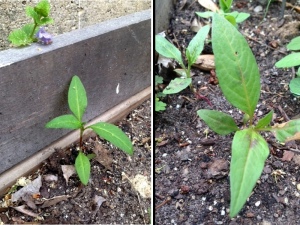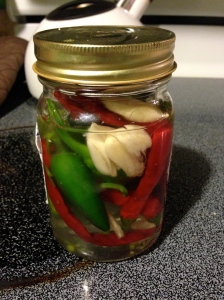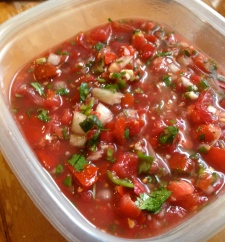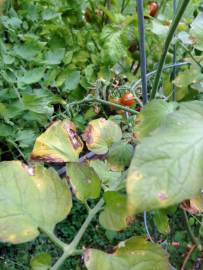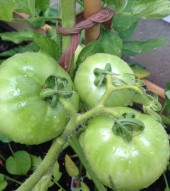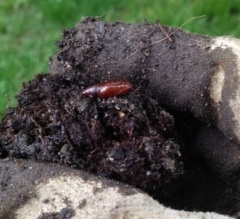I pulled a couple of these doing some weeding around our garden beds, but then I realized these didn’t look like the typical weeds that pop up in our garden. They had a distinct leaf shape and looked like pepper plants. While I’m not really sure if that’s what they are, we’re going to let them grow up a bit and see.
In the one bed it makes sense — that’s where we had the majority of our pepper plants last year.
There are even two growing in a pot with one of our transplanted herbs, which didn’t survive. That one also makes sense because we had a couple peppers in that bed as well.
The one that is a bit baffling is where we currently have snow peas and will have squash later this year. We had our tomatoes and basil there last season.
So how did a pepper plant get there? I have a couple theories, but we’ll never really know.
